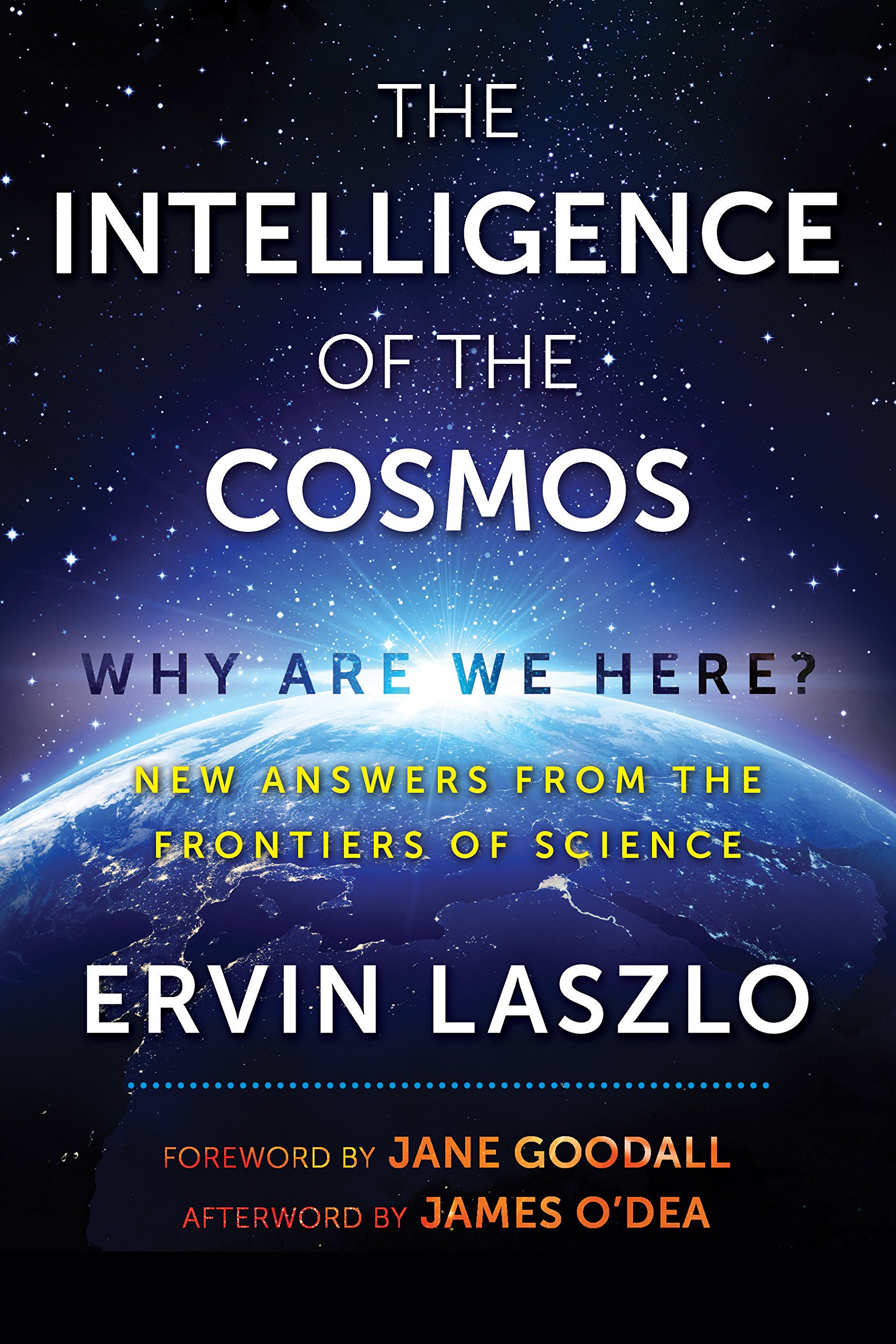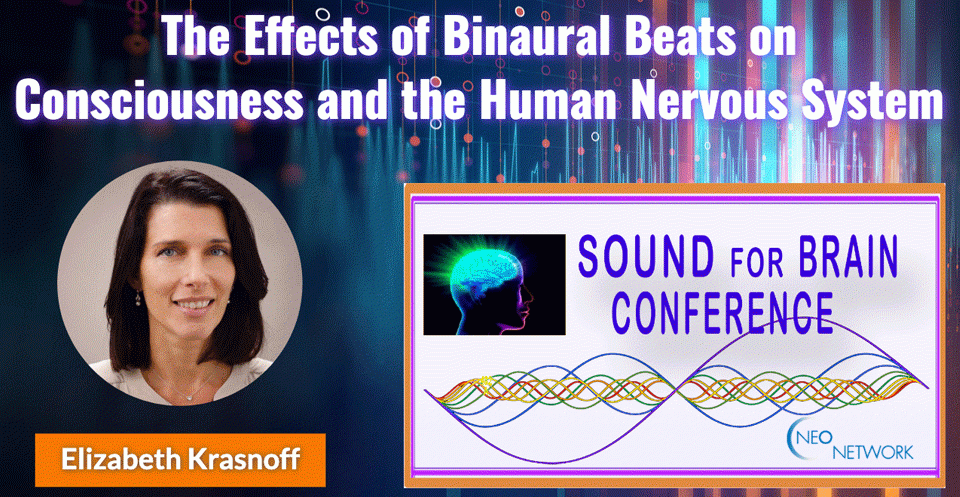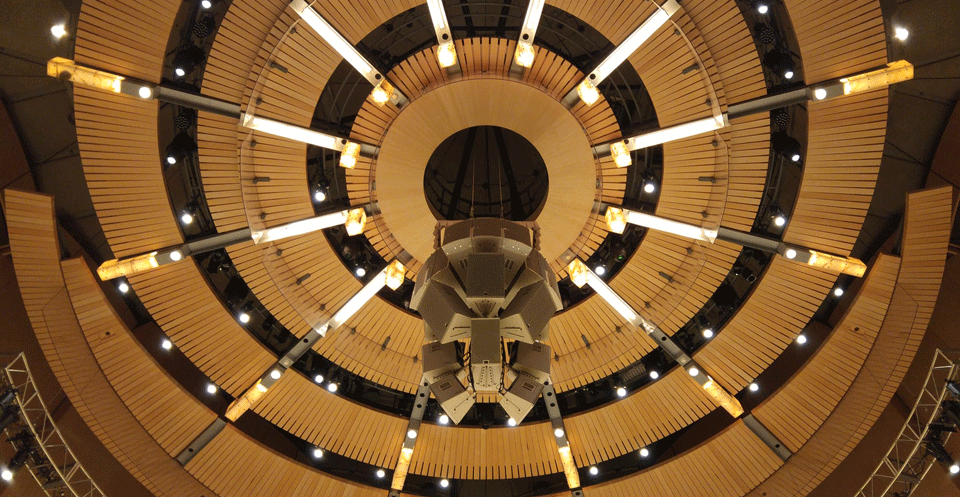Book Review: Ervin Laszlo "The Intelligence of the Cosmos"


As reprinted from World Futures Journal.
This book is one of the most important books of 2017. Laszlo shows us the nature of vibration, and a universe made up of meaning and compassion.
In his book, The Intelligence of the Cosmos: Why Are We Here?, Ervin Laszlo, the Hungarian philosopher of science, systems theorist, and integral theorist, structures his theories on consciousness around the three perennial questions this author first came to know through mythologist Joseph Campbell and the study of world religions: Who are we? Where did we come from? And where are we going?
Laszlo begins the book with his credo, Eight Cardinal Propositions, which he then works out in further detail in the first section of the book. His introduction is written by well-known British primatologist Jane Goodall. Goodall delivers a perfectly grounded and earthy harmonic counterpoint to the discus- sion of that which we cannot see or touch or know with our five senses. In the second part, Laszlo presents seven colleagues’ reflections on this time of revo- lutionary knowledge and understanding. Last, an afterword by James O’Dea applauds the map of consciousness Laszlo has now made available to us.
Laszlo’s theory of everything describes a cosmic intelligence as the prime mover, which came in with a “Big Bang” and infused our universe and its sibling universes with intelligence (p. 34). This explosion released energies that “polarized the segment of the cosmic Akashic field that became their point of origin” (p. 34). The Akashic field is Laszlo’s earlier term (and book) that describes an energetic field of information that is the substance of cosmic intelligence. Laszlo continues to connect the dots, describing that this polarization awakened the field (he refers to the Minkowski vacuum) into vibration, creating “Planck- scale ripples,” which include electrons, protons, and neutrons (p. 34). After this the ripples clustered together into the structures we perceive in our universe (p. 34). This is why he says that we are all made out of vibration. Laszlo writes: “The laws of nature are instructions, precise algorithms, for the evolution of coherent systems in the spacetime domain of our universe” (p. 34).
This intelligence has rules and a purpose. As an example, he cites the Pauli exclusion principle, which states that no two electrons can be in the same orbit. This law could be said to act like an air traffic control tower, making sure that all planes stay in their own flight paths, and is responsible for the formation and integrity of the structure of atoms. Laszlo’s merging of theories make both common and cosmic sense. In chapter two, Laszlo presents the research of Deepak Chopra and Menas Kafatos who also attribute the “structure and coherence creating” laws of nature to cosmic intelligence. The behavior of these laws is articulated in their case as complementary, creatively interactive, evolv- ing, veiled non-locality, cosmic censorship, and recursion (p. 36).
Another interesting example is, as if human commerce mimics the very laws of nature, Laszlo points out that there is an anti-trust law that operates, deconstructing systems back into smaller components when their limits of coherence have been reached (p. 37). What follows is a new level of complex- ity and coherence. As ecotheologian Thomas Berry suggests, to increase our understanding of who and where we are and how to move forward, we must look to our biology and to our universe (Berry, 1988).
For all of the transpersonal nature of a discussion of consciousness, Laszlo’s picture of the cosmos and our purpose in it is illuminated by a surren- der to compassion and love. His final summary: “To integrate, harmonize, and unify all things, and at the same time embrace all things in oneness and love, is the Telos of all existence. It is the ultimate Telos of human existence. When all is said and done, it is why we are here” (p. 47, Ervin Laszlo). The word telos is used here in its original Greek meaning of purpose. Although Laszlo does not mention the word God, his cosmic intelligence reminds this author very much of the religious notion of God. To address this question, in the second half of the book, Shamik Desai discusses the notion of God in the scriptures of the Semitic or Western faiths—Judaism, Christianity, and Islam— and the Eastern faiths—Hinduism, Buddhism, and Taoism. They have in com- mon with Laszlo’s cosmic intelligence a path of compassion to and an experi- ence of unity and oneness (p. 111).
In the other six essays, Kingsley L. Dennis writes on the healing powers of the re-enchantment of our worldview; Emmanuel Kuntzelman discusses upgrading our worldview with the power of this purpose; Maria Sagi addresses the goals of contemporary social change in light of Laszlo’s definition of our purpose, which is no less than a call to planetary consciousness; Dawna Jones deftly and importantly applies this elevation of purpose to business; John R. Audette asks what this contributes to our sense of meaning in this life and the next through a discussion of the five archetypal paths of inquiry; and Garry Jacobs engages the challenge of reconciling science, spirituality, and life.
According to Stanislav Grof (2008), one of the founders of Transpersonal Psychology and researcher of states of non-ordinary consciousness, there are two pioneers in the field of “integrating transpersonal psychology into a new world view” (p. 51). who deserve to be mentioned, Ken Wilbur and Ervin Laszlo. Grof (2008) writes: "Where Wilber outlined what an integral theory of everything should look like, Laszlo actually created one” (p. 52). Laszlo aligns with and often cites thinkers such as Einstein and physicist and discoverer of quanta, Max Planck and physicist and engineer Nicholas Tesla, quoting him to say: “[ ... ] if you want to know the secrets of the universe, you should think in terms of energy, frequency, and vibration” (p. 13). Laszlo also pays tribute to scientist David Bohm’s implicate order, noting the important contribution this discovery has made to his work.
However, Laszlo’s integrated worldview is born into a hostile landscape. It is in stark contrast to the Newtonian–Cartesian worldview, which still holds center stage in the West. In his book, Laszlo addresses mainstream thinkers such as cosmologist Steven Weinberg or physicist Thomas Kuhn, who believe that evolution and consciousness are not purposeful but are a cold and imper- sonal set of mechanisms that randomly sit together without a plan. Although Kuhn is known for presenting a more fallible worldview of science to the mainstream, Laszlo argues otherwise: “Evolution, according to Kuhn, is an intelligible but not a purposive process, it is not evolution toward anything [...] The long-term processes of evolution are not random and they are not reversible: they manifest a distinct directionality” (p. 28, Ervin Laszlo). Laszlo resists the notion of indifference and is a champion for reanimating our uni- verse with coherence, meaning, and compassion.
Now for the diehard fans, let us focus on a brief overview of Laszlo’s eight propositions, as they are the heart and summary of his work.
Firstly, he defines the cosmos as “an infinite and eternal intelligence” (p. v). He uses the terms cosmos and cosmic intelligence in the same sense, as the prime mover from which all instruction and purpose derives.
Second, he states that this cosmic intelligence is “brought into being in a finite domain of space and time: the universe” (p. v). This intelligence, which has laws, animates the phenomena in our universe.
The third proposition is that the physical matter we think we observe is actually “clusters of vibration in the universe, in-formed by the intelligence of the cosmos” (p. v, Ervin Laszlo). Laszlo uses the word in-formed in the sense of David Bohm’s theory, that intelligence (the implicate order) in-forms all phenomena (the explicate order) (p. 11). As Laszlo says: “The universe, as we now know, is not a domain of matter moving in passive space and indifferently flowing time; it is a sea of coherent vibrations. These vibrations give us the phenomena of nonphysical realities: mind and consciousness” (p. 21). This too is a moment of great importance: a theory to philosophically contemplate the relationship between vibration and our perceived reality, indeed our very own bodies.
The fourth proposition states that these clusters of vibration exist at different frequencies and wavelengths, manifesting in our universe as “structures of matter, as individual consciousness, and as transcendental intuition” (p. v, Ervin Laszlo). This is an incredibly exciting new theory of three classifications of cosmic intelligence—how much can be known from comparing and con- trasting them this way?
Proposition five then gives a fascinating comparison of how the first two vibratory expressions, matter and individual consciousness, evolve in space and time: “Structures of matter (matter-like clusters of vibration) evolve inter- mittently; they periodically de-cohere and reconfigure. Individual conscious- nesses (mind-like clusters of vibration) evolve continuously, through incarnate phases in association with structures of matter and discarnate phases beyond matter and beyond space and time” (p. v). What we are looking at here is an empirical explanation of reincarnation (refer to the laws and principles sum- marized in the first paragraph for the scientific underpinning), a rare moment of peering behind the curtain to meet the wizard. I was impressed that in chap- ter one, Laszlo takes a big step in including near death experiences, out of body experiences, and after death experiences as examples of consciousness existing outside of the living brain and body. This is a major milestone for the complementary alternative medicine community known as Energy Medicine.
Proposition six tells us that “structures of matter evolve toward supercoher- ence, and individual consciousnesses evolve toward oneness with and love for all things in space and time” (p. v). Our physical matter seeks a rhythm of physical coherence, and our individual consciousness seeks love, compassion, and oneness as the glue that coheres its purpose, and both of these systems support our mandate of compassionate expansion in relationship to other sys- tems—which is ultimately the ability to evolve into ever more complex sys- tems. Laszlo draws from evolutionary biologist Bruce Lipton: “Evolution optimizes the capacity of cells to ‘perceive’ their environment and to translate it into physical responses. If the evolution of this basic form of consciousness runs into constraints, cells shift from maximizing their own perception to asso- ciating at a higher level of complexity” (p. 39).
This brings us right into the seventh proposition, which states that the pur- pose of these clusters of vibrations is to transmit “the intelligence of the cos- mos into the universe” (p. v). This is a giant question currently approached by many in the field. We have learned that we are transmitters, but why were we designed that way? To whom are we transmitting our information, back to cos- mic intelligence (ourselves) itself? Entrepreneur Elon Musk and others believe that we are sending information to a consciousness located elsewhere, that we here are perhaps only having an experience like the holodeck on Star Trek. How quickly the transpersonal conversation becomes as impersonal and cold as our prevailing Newtonian–Cartesian worldview.
However, the eighth and final proposition is Laszlo’s answer to this ques- tion, where he tells us the ultimate purpose of being here is transmitting the “unifying, embracing, and all encompassing intelligence of the cosmos into the universe” (p. v). As to why we are making that transmission, it is again Laszlo’s notion that consciousness is sending love to itself because that is what it is designed to do. Consciousness is designed to expand and to create, and love is the engine of that expansion and creation. This aligns with new eco- logical, feminist, and cosmopolitan perspectives on the core values we need to embrace as our world population explodes and we search for unifying diversity of values—a compassionate value for life being first among those.
This review began with Laszlo’s conclusion, which essentially states ever more clearly that our purpose here is to find coherence in our bodies and com- passion in our hearts and to transmit this beautiful melody out into our uni- verse. Laszlo concludes in his third and final chapter: “We are harmonies created by the plucking of a cosmic harp, ascending toward more and more encompassing melodies” (p. 45). Perhaps this is why music is such an experience of wholeness and healing for many individuals, and such an important part of human religion, belief, and ritual. Interestingly, it is also not just a metaphor: one can listen to the celestial music of an actual “planetary harp.” The electrical energy that is transmitted from the sun to the earth forms “harp strings” and makes celestial music (Lipton, 2017).
If you are skeptical of such experiences as near death or out of body, this book may be a turn off for you and make it hard to stick with it till the more empirically known data are presented. There are certainly times where the author does not elaborate in a quantitative empirical way that a newcomer or a skeptic might require. And then, once the science arrives, it can be unintelli- gible but to the specialists. If your worldview is Newtonian–Cartesian, this material may also be uncomfortable in that Laszlo’s theories of an animated, conscious cosmos whose purpose is compassion are not a part of accepted the- ory at this time, and they make radical inroads into a new and ancient way of being. Last, it would be illuminating to see an essay in here from cultural his- torian and systems scientist Riane Eisler. Eisler is known, among other things, for her theory of pre-historic partnership models of society (1987). Eisler asks us to take the whole of history into account in our theories, to go back to a time when these partnership-based societies worshipped the power to give life, rather than the power to take life. In Laszlo’s theories, are we looking here at this return to the value of life itself? There is certainly a case being made here for collaboration (partnership) rather than competition (domination).
Ervin Laszlo has the same charisma, clarity, and easy relationship to his domain as did Joseph Campbell. It is rare enough to be a thought leader in an emerging field, but combine this with his accessible, relatively jargon-free communication style, and it is no wonder that his contributions have such momentum. Laszlo maintains the simplicity and clarity of the connections he draws from the complex material, and the reader can follow along well. A favorite fact, for example, was learning in chapter two that we actually lower our frequency to receive information from beyond our senses, rather than ascend higher.
If the latest findings on the intersection of modern science and timeless spir- ituality interest you, or our purpose for being intrigues you, or the scientist in you wonders what being made up of vibrations really means, this book is for you. Anyone who is interested in questions of our origins or purpose will be captivated. What this author hopes to read in the next book is: What does lead- ing edge science have to say about the ability to heal with vibration, or vibrational medicine? In particular audible vibration, or “sound”? Does vibrational healing offer the most direct language that our vibratory matter can understand?
REFERENCES
Berry, T. (1988). The dream of the earth. Berkeley, CA: Counterpoint.
Eisler, R. (1987). The chalice and the blade. San Fransisco, CA: Harper Collins.
Grof, S. (2008). Brief history of transpersonal psychology. International Journal of Transpersonal Studies, 27(1), 46–54. doi:10.24972/ijts.2008.27.1.46
Lipton, D. B. (2017). From chaos to coherence: The power to thrive in life’s extremes. Santa Ana Pueblo, NM. Sept 28–Oct 01.
Laszlo, Ervin. The Intelligence of the Cosmos: Why Are We Here? Rochester, VT: Inner Traditions, 2017 (v-47 pp., ISBN: 9781620557310), ISSN: 0260-4027 (Print) 1556-1844 (Online) Journal homepage
To cite this article: Elizabeth W. Szatmari Krasnoff (2018): Book Review, World Futures, DOI: 10.1080/02604027.2018.1520579, Laurance S. Rockefeller Library, California Institute of Integral Studies, San Francisco, California, USA
World Futures, 0: 1–5, 2018
Copyright # Taylor & Francis Group, LLC ISSN: 0260-4027 print / 1556-1844 online DOI: 10.1080/02604027.2018.1520579










